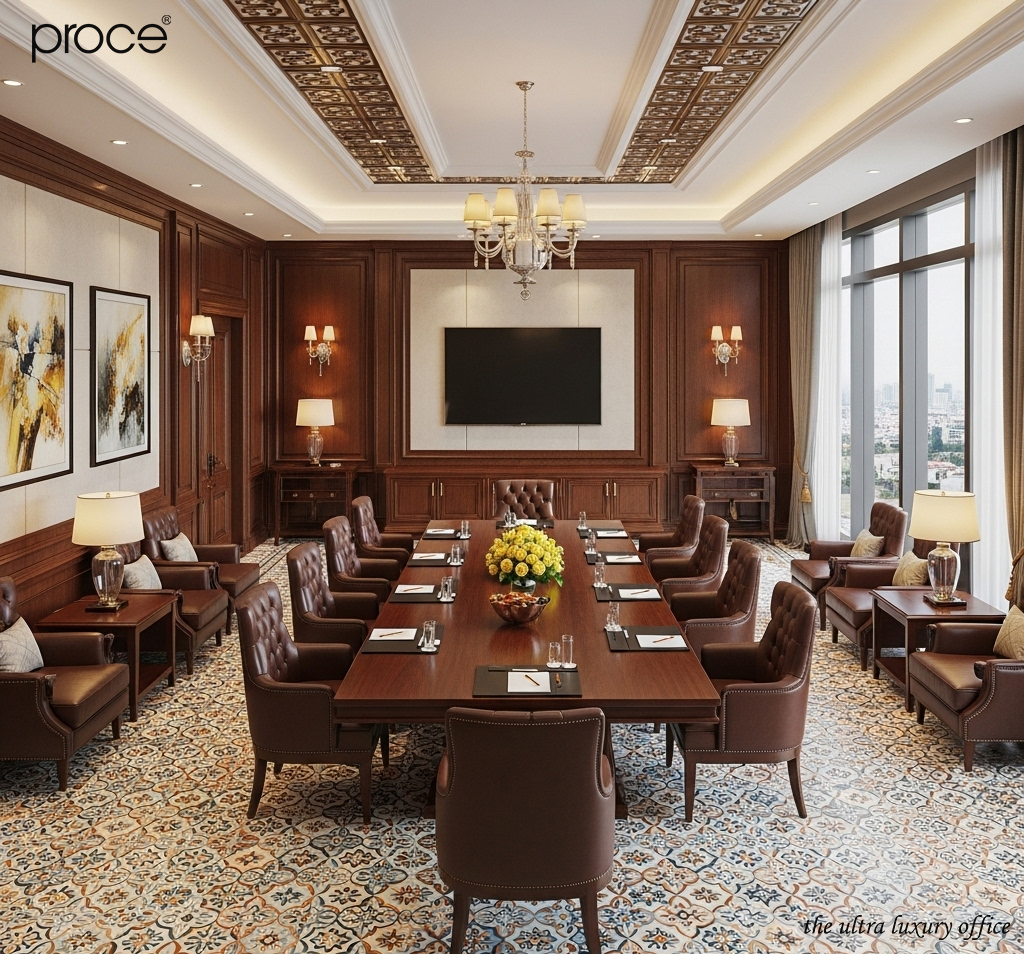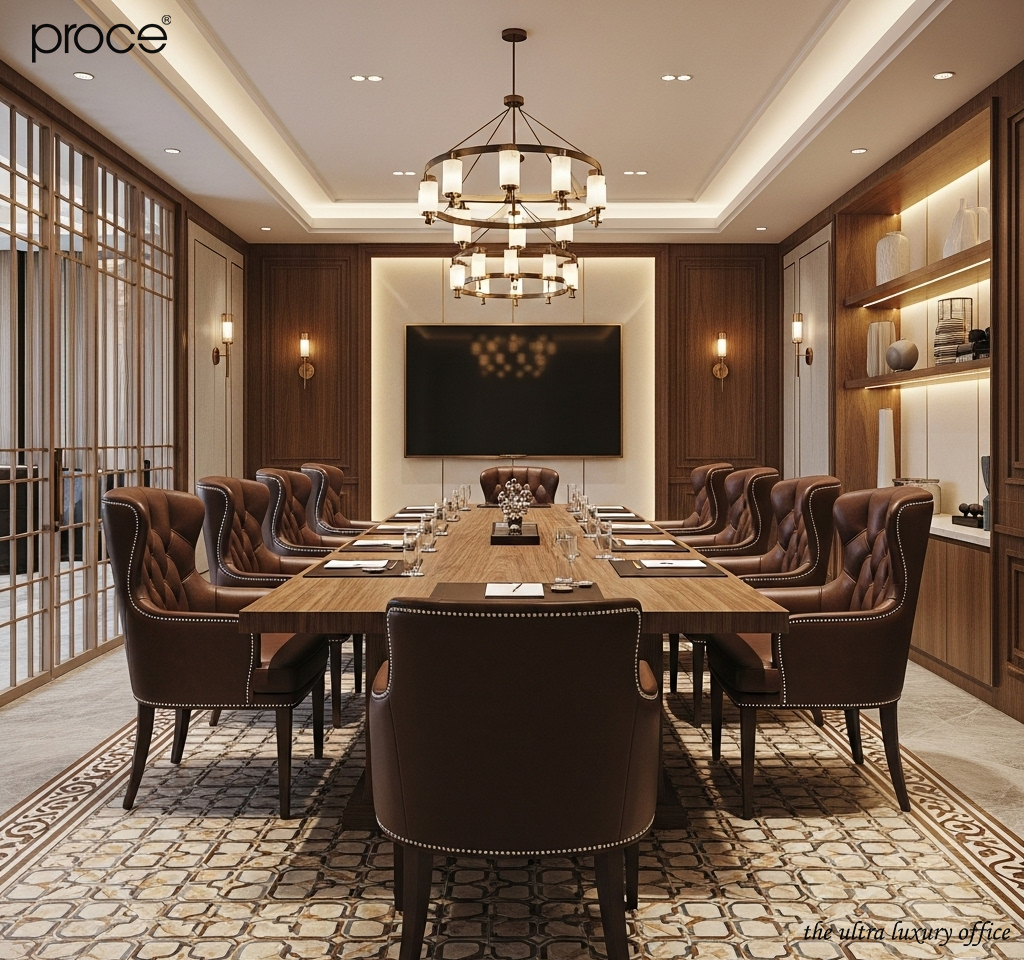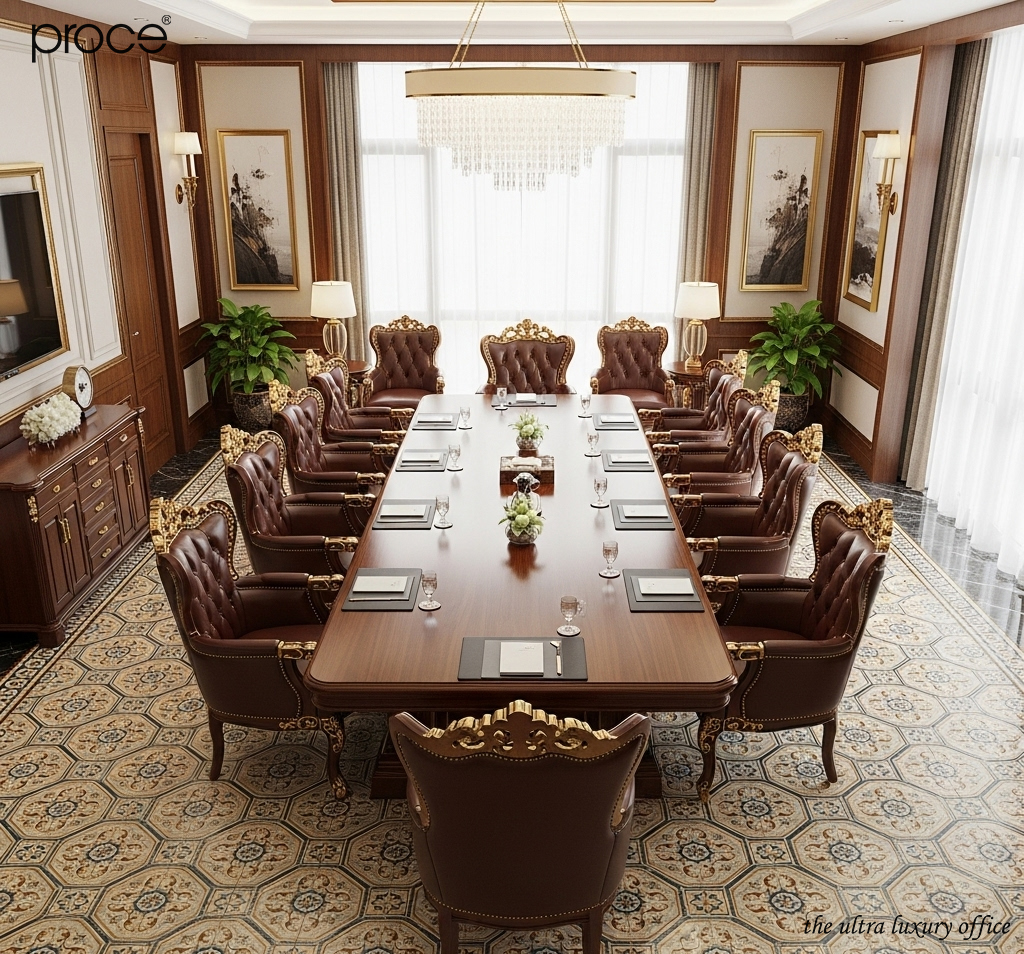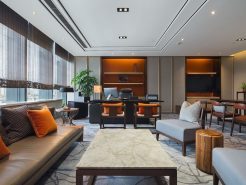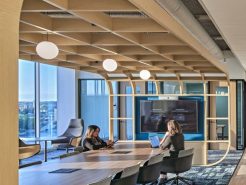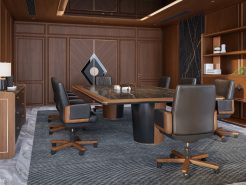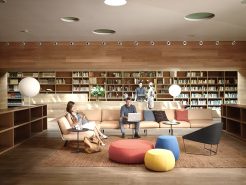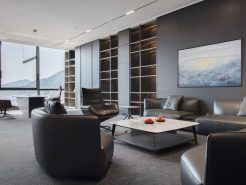There is a meeting room where every morning sunlight streams through the wooden window, gently spreading on the ancient patterned tile floor. There, the chairman often sits pensively before making big decisions. Not only because of the numbers or strategies, but because the space around him carries a very Vietnamese feeling. The chairman’s meeting room needs more than a modern appearance. It is also a space with depth and its own soul. The handmade tiles, with old patterns and the hands of the craftsmen. It is the material that breathes life into that space – a rustic, profound and full of identity. Let’s awaken the Vietnamese identity in every corner of the leadership space through the article below!
1. Handmade cement tiles – Traditional material with Vietnamese identity
Handmade encaustic cement tiles are not only a building material. But also an artistic symbol bearing the mark of Vietnamese culture. Appearing from the end of the 19th century, encaustic cement tiles were introduced to Vietnam during the French colonial period. And quickly became an indispensable part of urban and civil architecture in the early 20th century. Ancient villas, churches, schools and public works were all paved with colorful encaustic cement tiles. Creating an ancient charm that is still deeply imprinted in the memories of many generations.
The special thing about handmade tiles is the completely manual production process. It requires meticulousness, patience and high skills. Each tile is the crystallization of art and sophistication. It is created from a bronze mold, hand-colored, hydraulically pressed and then naturally dried. No two tiles are exactly the same. And that is what makes each product unique. The patterns are inspired by nature, beliefs, and daily life of Vietnamese people. Such as lotus flowers, apricot blossoms, cranes, bronze drums… The motifs reflect the depth of culture and identity of each region.
Today, in the wave of returning to indigenous values and sustainable lifestyles. Handmade cement tiles are reborn as a symbol of traditional art. Carrying the Vietnamese soul in every smallest detail.
2. Reasons to apply handmade tiles to the chairman’s meeting room
Putting handmade tiles in the meeting room of the chairman’s office is not simply an aesthetic choice. It is also a declaration of identity and sophisticated artistic thinking. Tiles are not only beautiful in color and pattern. They also contain cultural depth – where each detail is a story. Each pattern is a mark of time. Especially with the ability to design on demand. Businesses can completely incorporate logos, brand symbols or business philosophies into each tile. Turn the wall or floor into a unique and meaningful artistic declaration.
The meeting room of the chairman’s office often requires formality, difference but still closeness. Cement tiles – with nostalgic beauty and high craftsmanship. Can create special artistic accents such as brick walls, tile mosaics or logos made of cement tiles. Helps balance between modern and traditional. This creates a warm, close feeling. Breaks the coldness often seen in pure industrial designs.
More importantly, using handmade tiles also shows the vision of the leader. A person who understands and appreciates the cultural and historical values of the nation. This is also a way to affirm personal style and aesthetic taste and convey the message of sophistication and depth of the organization. In a world that is looking for profound differences, a space with its own identity is the key to creating a mark. (Chairman’s office meeting room – Air sensor system characteristics).
3. Structure and characteristics of handmade tiles in the chairman’s meeting room
Structure of a cement tile
A traditional handmade cement tile is made up of three main layers. Each layer plays an important role and is pressed tightly by hand. To ensure adhesion and durability. The top layer, called the pattern layer, is about 2-3 mm thick. It is the “facade” that determines the aesthetics of the tile. This layer is made from a mixture of white cement, superfine stone powder and natural pigments to create long-lasting colors. The patterns are hand-poured into bronze molds. Thanks to that, the lines become sharp, clear and the colors have a characteristic artistic depth.
Below is the intermediate layer, consisting of cement and sand. It acts as a “transition” layer. It helps the pattern layer adhere firmly to the tile base. At the same time, it supports the ability to absorb water and balance the humidity of the tile.
Finally, the bottom layer is also the thickest and strongest layer. Made from a mixture of cement and coarse sand and compressed carefully in the mold. This layer helps the tile have high hardness and good bearing capacity. Suitable for flooring and wall cladding in many different conditions of use. This three-layer structure creates the durability, aesthetics and timeless value of handmade cement tiles. (Unboxing Proce’s 4 million-dollar meeting rooms).
Outstanding features of handmade cement tiles
Handmade cement tiles stand out for their unique beauty and completely handmade production process. Something that no modern material can replace. Each tile is created by hand, so no two tiles are exactly alike. Small differences in the amount of poured color, the evenness of the craftsmanship or the way the colors are mixed. Will bring subtle variations in tone and pattern. It is the small deviations due to handcrafting such as slight changes in color or lines. That create a unique personality, making each tile have a unique beauty that is difficult to mix.
Another notable point is that cement tiles do not need to be fired in a kiln, but are hydraulically compressed and left to dry naturally. This not only helps save energy, but also reduces greenhouse gas emissions. Contributing to environmental protection – a factor that is very suitable for the trend of modern sustainable architecture.
Not only beautiful but also durable, handmade cement tiles can last up to decades if used and maintained properly. The surface is colorfast, easy to clean, and has good load-bearing capacity. Making it an ideal choice for both classic and modern spaces. Both aesthetic and rich in long-term use value. (Why is the plaster ceiling the crown of the presidential meeting room?)
Conclude
In every meeting, people often pay attention to the tables, chairs, lighting or projection technology. But few people notice that the tiled floor underfoot with its handcrafted patterns and cultural memories is what silently creates the unique atmosphere for the leadership space. The meeting room of the chairman, if breathed into life by Vietnamese ceramic tiles. Not only beautiful in form, but also profound in spirit. Identity does not lie in ostentation, but in the details that tell stories. And ceramic tiles are the silent but powerful storytellers. Let each tile guide the way to decisions with Vietnamese soul.
=====\
PROCE – TOTAL LUXURY OFFICE SOLUTION
Website: https://proce.vn/
Youtube: https://www.youtube.com/@noithatvanphonghangsang
Fanpage: https://www.facebook.com/vanphongnhapkhauProce
GG Business: https://business.google.com/dashboard/l/15115233216900975876
Linkedin: https://www.linkedin.com/company/74359718/admin/
Hotline: 090.115.6767
#phong_hop_phong_chu_tich; #Phong_hop; #phong_hop_phong_chu_tich_chuan_sang
#thiet_ke_phong_hop_phong_chu_tich; #noi_that_phong_hop_phong_chu_tich
# derco_phong_hop_phong_chu_tich; #phong_hop_phong_chu_tich_dep


